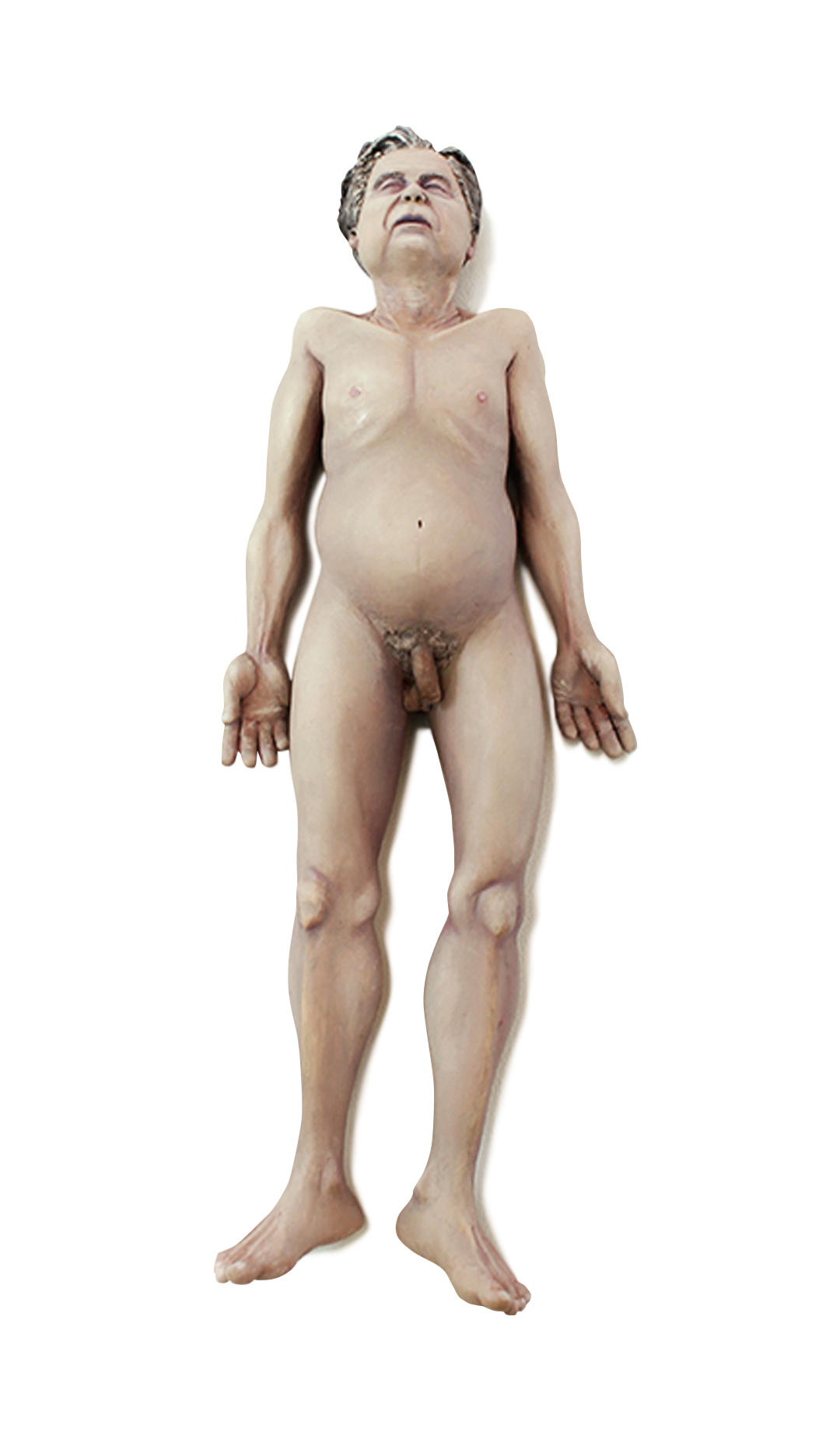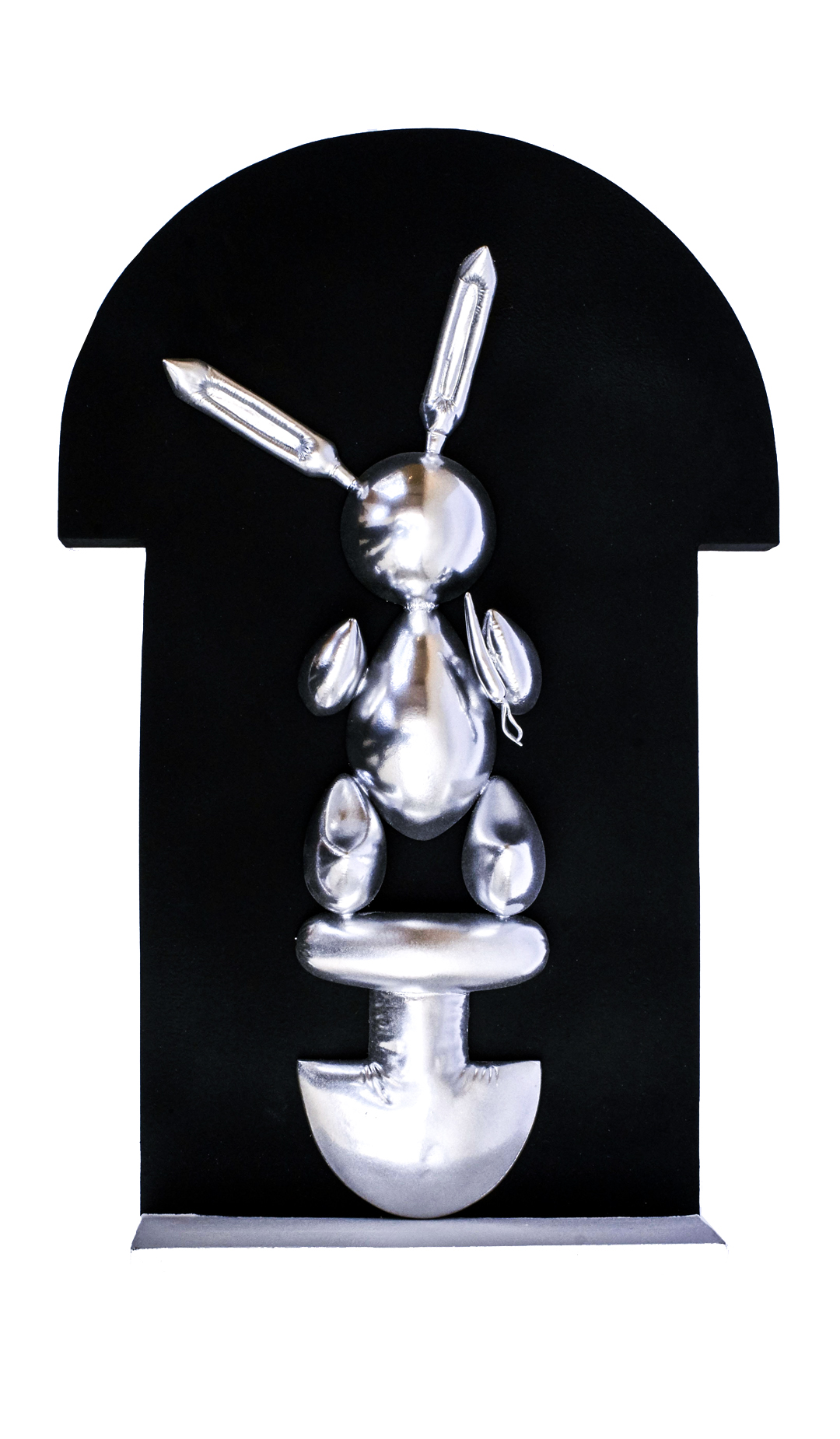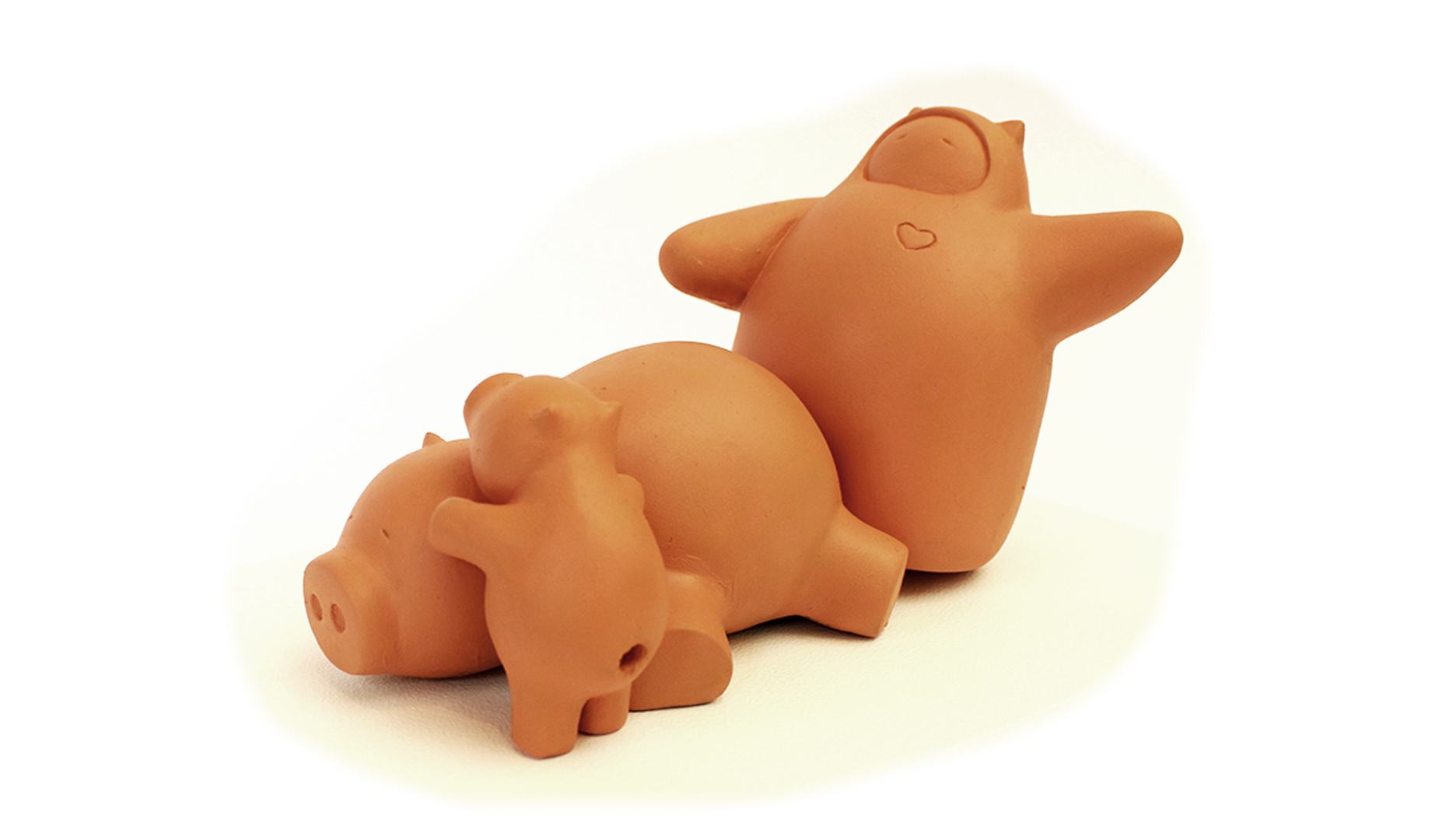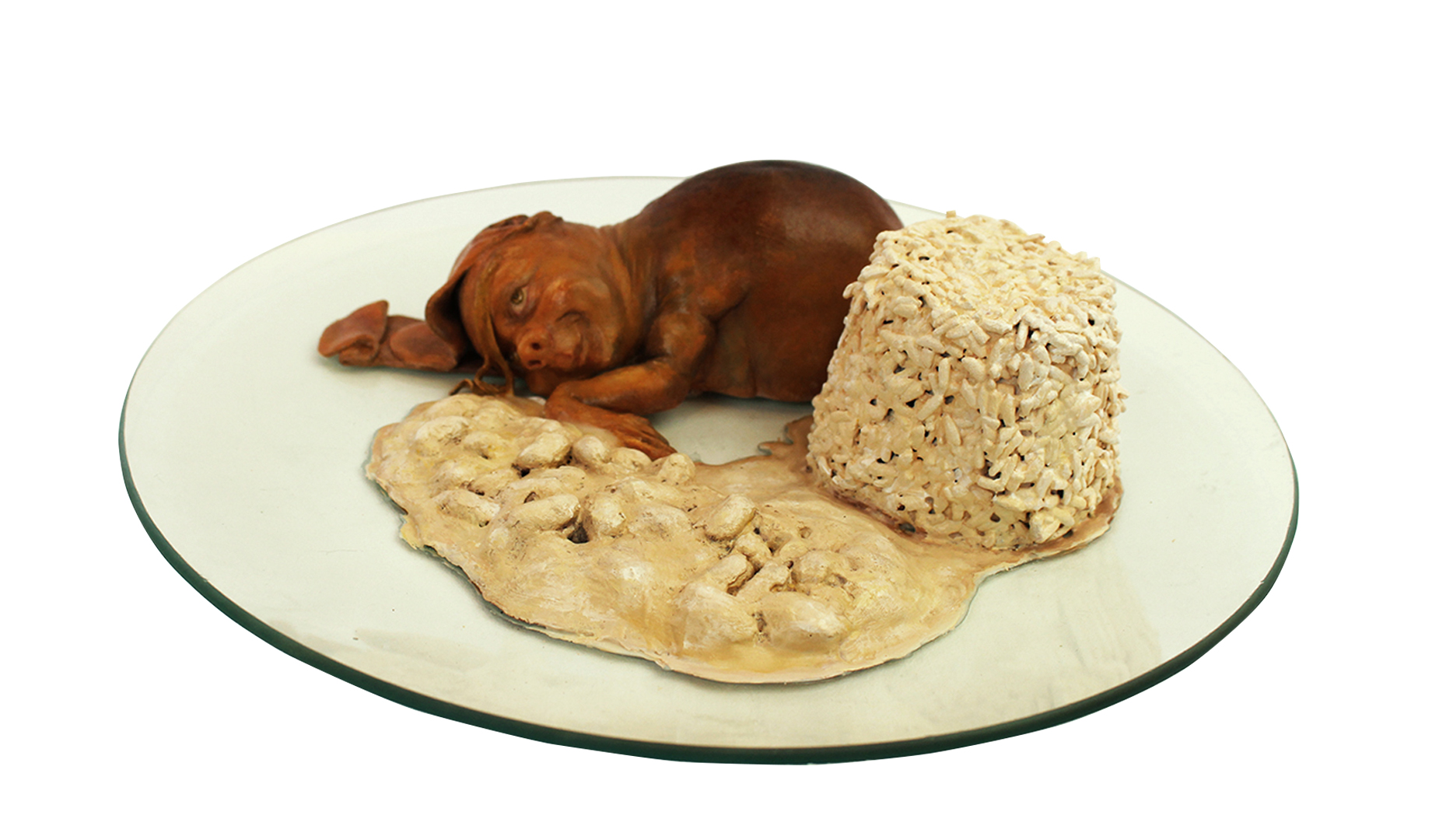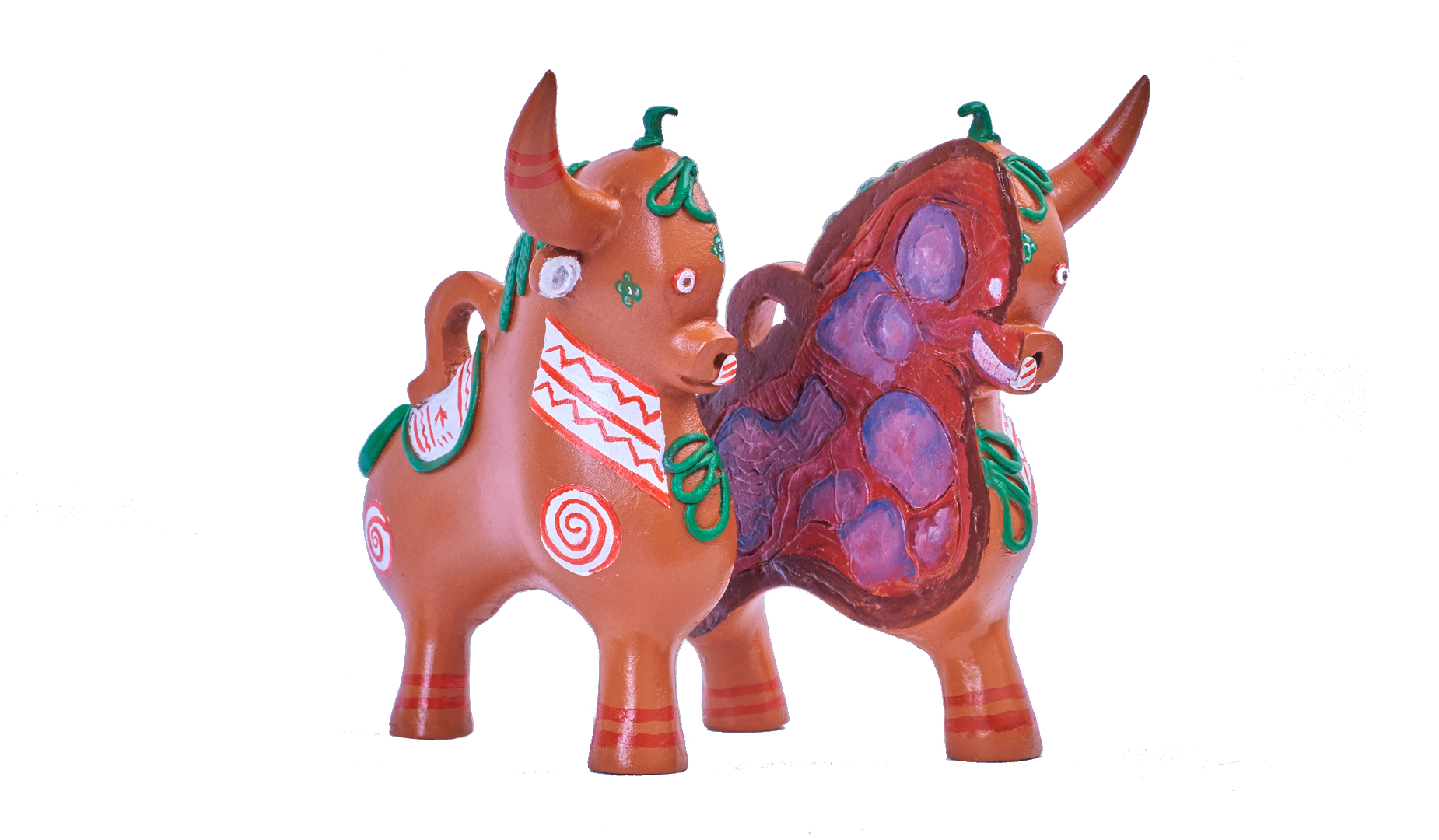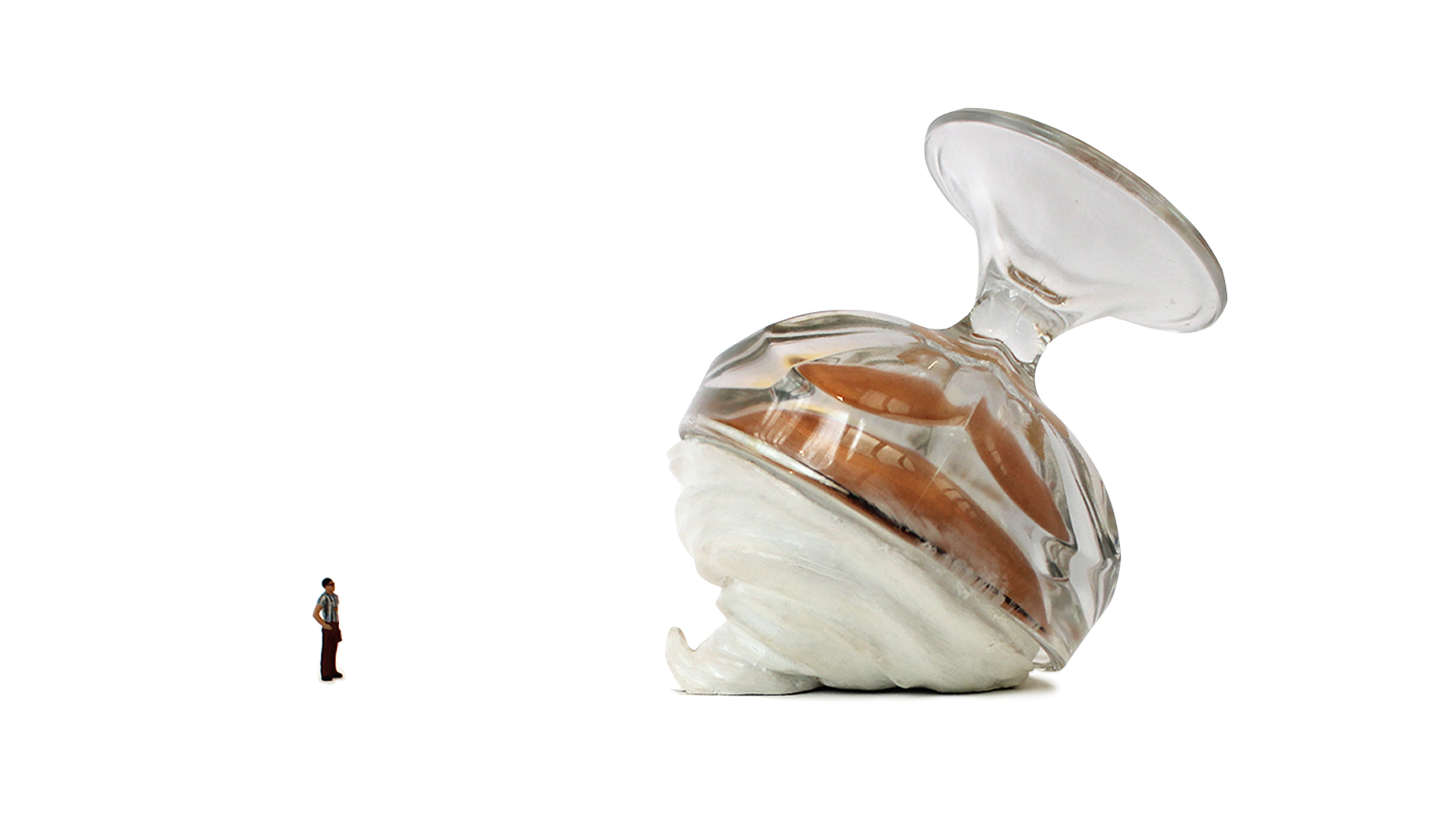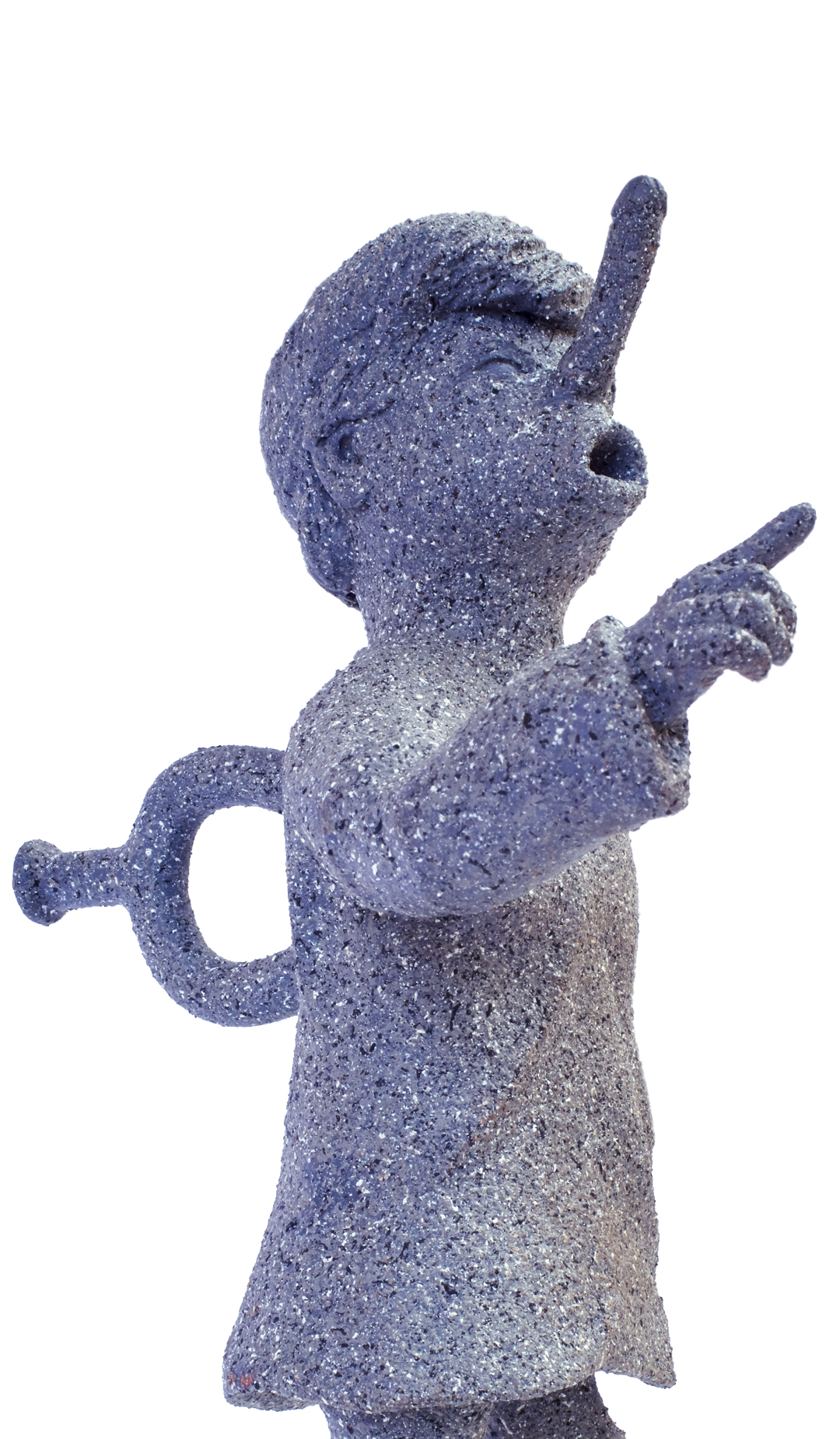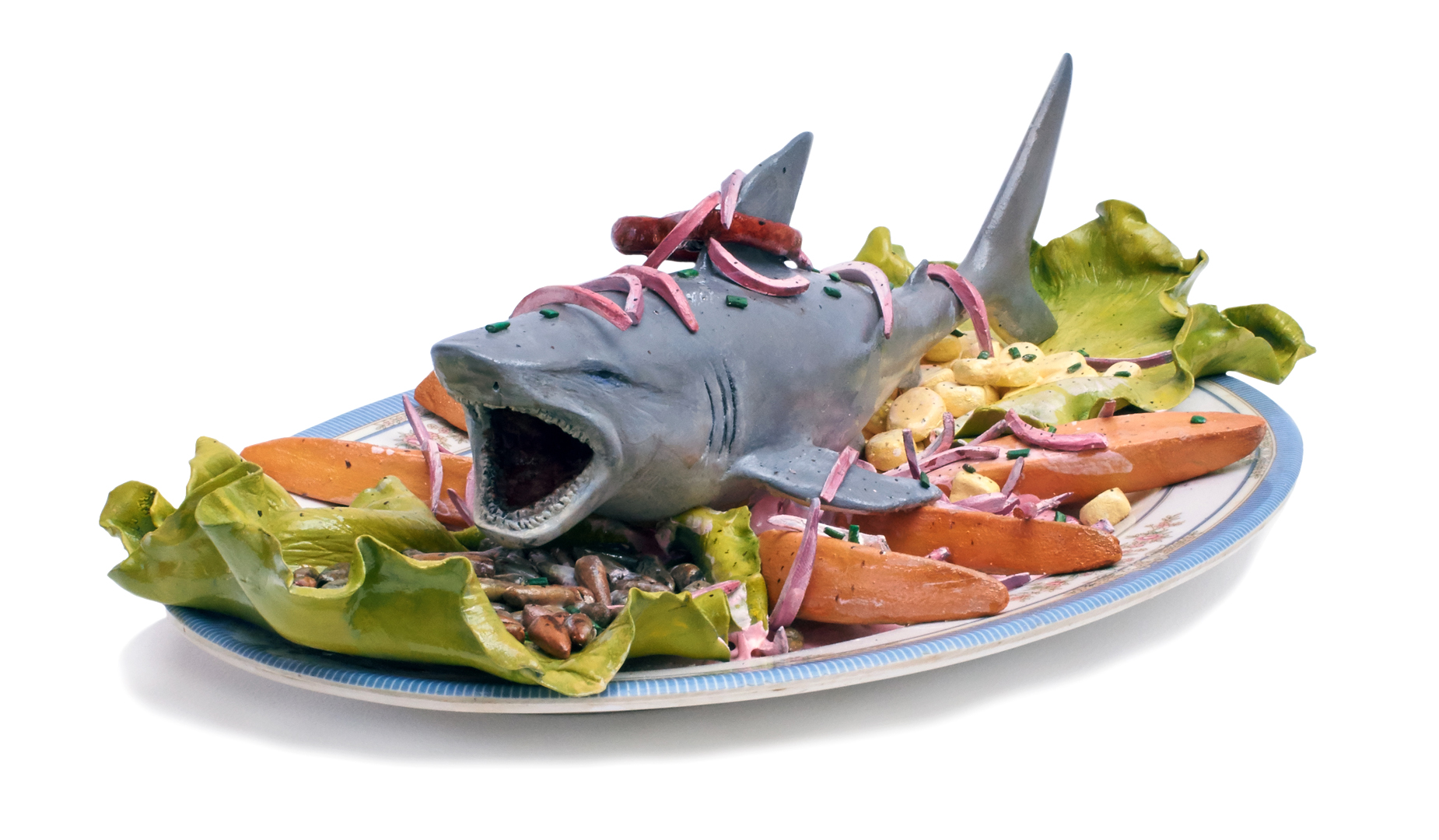
IN CASH
GALERÍA GARÚA
LIMA, PERÚ. 2015
GARÚA GALLERY
LIMA, PERU. 2015
LIMA, PERÚ. 2015
GARÚA GALLERY
LIMA, PERU. 2015
FICHA TÉCNICA
Instalación
Técnica mixta: Pasta de modelar DAS, resina, madera, pintura y óleo
Medidas variables
TECHNICAL DATA SHEET
Instalation
Mixed technique: DAS modeling paste, resin, wood, paint and oil paint
Variable size
Es una serie escultórica compuesta de nueve piezas. Posee un carácter contextual, sobre todo en
términos identitarios, reconociendo síntomas comunes en el territorio artístico sudamericano, en este
caso específico: Lima, Perú.
Uno de los ítems transversales en la región corresponde a la urgencia aspiracional de presentar obra y mercado del arte cual país primer mundista, otorgando una sobrepoblación de instancias privadas de producción (a veces de piezas con carácter decorativo).
La obra establece un cruce entre el arte contemporáneo global y los tópicos clichés de la marca Perú como paquete turístico: lo precolombino, lo gastronómico y el arte contemporáneo local.
El título, por su parte, opera como juego lingüístico y fonético de triple interpretación:
-“In Cash” en tanto alusión a los Incas
-“In Cash” en tanto compra- venta, inmediata.
-“In Cash” en tanto lo efectivo de una operación (visual).
Los cruces formales de la obra son:
PIEZAS PRECOLOMBINAS:
-“Self” de Marc Quinn con mango incaico en la nuca.
-“Fuck Face” de los hermanos Chapman con manco incaico en la espalda.
-“Rabbit” de Jeff Koons como cuchillo ritual incaico: “tumi”.
PIEZAS GASTRONÓMICAS:
-“The Listener” de Patricia Piccinini, en versión asada con guarnición de arroz y porotos.
-“La imposibilidad física de la muerte en la mente de alguien vivo” de Damien Hirst, en versión ceviche.
-“Cono de helado derramado” de Claes Oldenburg y Coosje Van Bruggen como el postre “suspiro
limeño”, dado vuelta junto a figura humana en miniatura con camiseta del equipo de fútbol Alianza
Lima (doble cita: Liliana Porter).
PIEZAS DE ARTE CONTEMPORÁNEO PERUANO-GLOBAL:
-“Dead Dad” de Ron Mueck con el rostro de Alberto Fujimori. -“Gordito” y “chanchito” del artista
Peruano Marcelo Wong en versión Paul Mccarthy.
-“Torito de Pucará” en versión Damien Hirst.
Uno de los ítems transversales en la región corresponde a la urgencia aspiracional de presentar obra y mercado del arte cual país primer mundista, otorgando una sobrepoblación de instancias privadas de producción (a veces de piezas con carácter decorativo).
La obra establece un cruce entre el arte contemporáneo global y los tópicos clichés de la marca Perú como paquete turístico: lo precolombino, lo gastronómico y el arte contemporáneo local.
El título, por su parte, opera como juego lingüístico y fonético de triple interpretación:
-“In Cash” en tanto alusión a los Incas
-“In Cash” en tanto compra- venta, inmediata.
-“In Cash” en tanto lo efectivo de una operación (visual).
Los cruces formales de la obra son:
PIEZAS PRECOLOMBINAS:
-“Self” de Marc Quinn con mango incaico en la nuca.
-“Fuck Face” de los hermanos Chapman con manco incaico en la espalda.
-“Rabbit” de Jeff Koons como cuchillo ritual incaico: “tumi”.
PIEZAS GASTRONÓMICAS:
-“The Listener” de Patricia Piccinini, en versión asada con guarnición de arroz y porotos.
-“La imposibilidad física de la muerte en la mente de alguien vivo” de Damien Hirst, en versión ceviche.
-“Cono de helado derramado” de Claes Oldenburg y Coosje Van Bruggen como el postre “suspiro
limeño”, dado vuelta junto a figura humana en miniatura con camiseta del equipo de fútbol Alianza
Lima (doble cita: Liliana Porter).
PIEZAS DE ARTE CONTEMPORÁNEO PERUANO-GLOBAL:
-“Dead Dad” de Ron Mueck con el rostro de Alberto Fujimori. -“Gordito” y “chanchito” del artista
Peruano Marcelo Wong en versión Paul Mccarthy.
-“Torito de Pucará” en versión Damien Hirst.
It is a sculptural series composed of nine pieces. It has a contextual character, especially in
identity terms, recognizing common features in South American artistic territory, In this specificcase, Lima, Peru.
One of the transversal characteristics of the region is the urgent need for presenting artwork and art market as if belonging to a first world country, resulting in an overgrown private production of mainlydecorative pieces.
In Cash establishes a cross between global contemporary art and Peruvian brand clichés topics sold for tourism: pre-Columbian art, gastronomy, and local contemporary art.
The work’s name has a triple phonetic and linguistical meaning:
- “In Cash” as an allusion to the Incas
- “In Cash” as a buy-sell, immediate.
- “In Cash” as the cash of an operation (visual).
The formal crosses of the work are:
PRE-COLUMBIAN PIECES:
- “Self” by Marc Quinn with Inca handle on the neck.
- “Fuck Face” of the Chapman brothers with Manco Inca on the back.
- “Rabbit” by Jeff Koons as an Inca ritual knife: “Tumi”.
GASTRONOMIC PIECES:
- “The Listener” by Patricia Piccinini, in a roasted version with rice and beans garnish.
- “The physical impossibility of death in the mind of someone alive” by Damien Hirst, in ceviche version.
- “Spilled ice cream cone” by Claes Oldenburg and Coosje Van Bruggen as the “Lima sigh” dessert, turned alongside a miniature human figure with the Alianza Lima soccer team jersey (double referenceto Liliana Porter).
PERUVIAN-GLOBAL CONTEMPORARY ART PIECES:
- “Dead Dad” by Ron Mueck with the face of Alberto Fujimori.
- “Gordito” and “chanchito” by Peruvian artist Marcelo Wong in Paul Mccarthy version.
- “Torito de Pucará” in Damien Hirst version.
One of the transversal characteristics of the region is the urgent need for presenting artwork and art market as if belonging to a first world country, resulting in an overgrown private production of mainlydecorative pieces.
In Cash establishes a cross between global contemporary art and Peruvian brand clichés topics sold for tourism: pre-Columbian art, gastronomy, and local contemporary art.
The work’s name has a triple phonetic and linguistical meaning:
- “In Cash” as an allusion to the Incas
- “In Cash” as a buy-sell, immediate.
- “In Cash” as the cash of an operation (visual).
The formal crosses of the work are:
PRE-COLUMBIAN PIECES:
- “Self” by Marc Quinn with Inca handle on the neck.
- “Fuck Face” of the Chapman brothers with Manco Inca on the back.
- “Rabbit” by Jeff Koons as an Inca ritual knife: “Tumi”.
GASTRONOMIC PIECES:
- “The Listener” by Patricia Piccinini, in a roasted version with rice and beans garnish.
- “The physical impossibility of death in the mind of someone alive” by Damien Hirst, in ceviche version.
- “Spilled ice cream cone” by Claes Oldenburg and Coosje Van Bruggen as the “Lima sigh” dessert, turned alongside a miniature human figure with the Alianza Lima soccer team jersey (double referenceto Liliana Porter).
PERUVIAN-GLOBAL CONTEMPORARY ART PIECES:
- “Dead Dad” by Ron Mueck with the face of Alberto Fujimori.
- “Gordito” and “chanchito” by Peruvian artist Marcelo Wong in Paul Mccarthy version.
- “Torito de Pucará” in Damien Hirst version.
